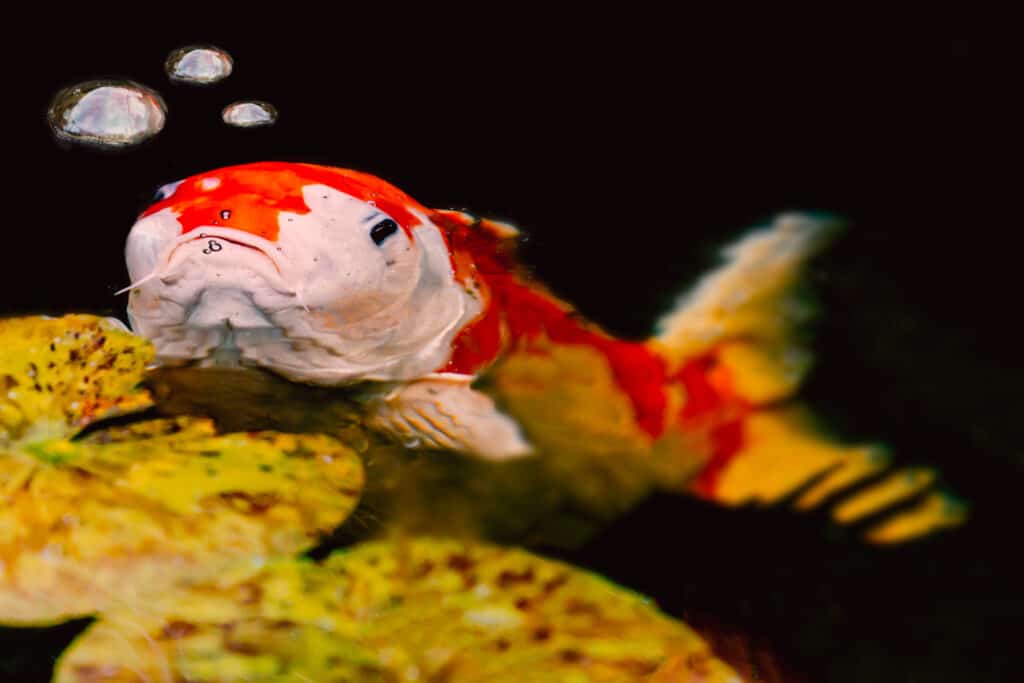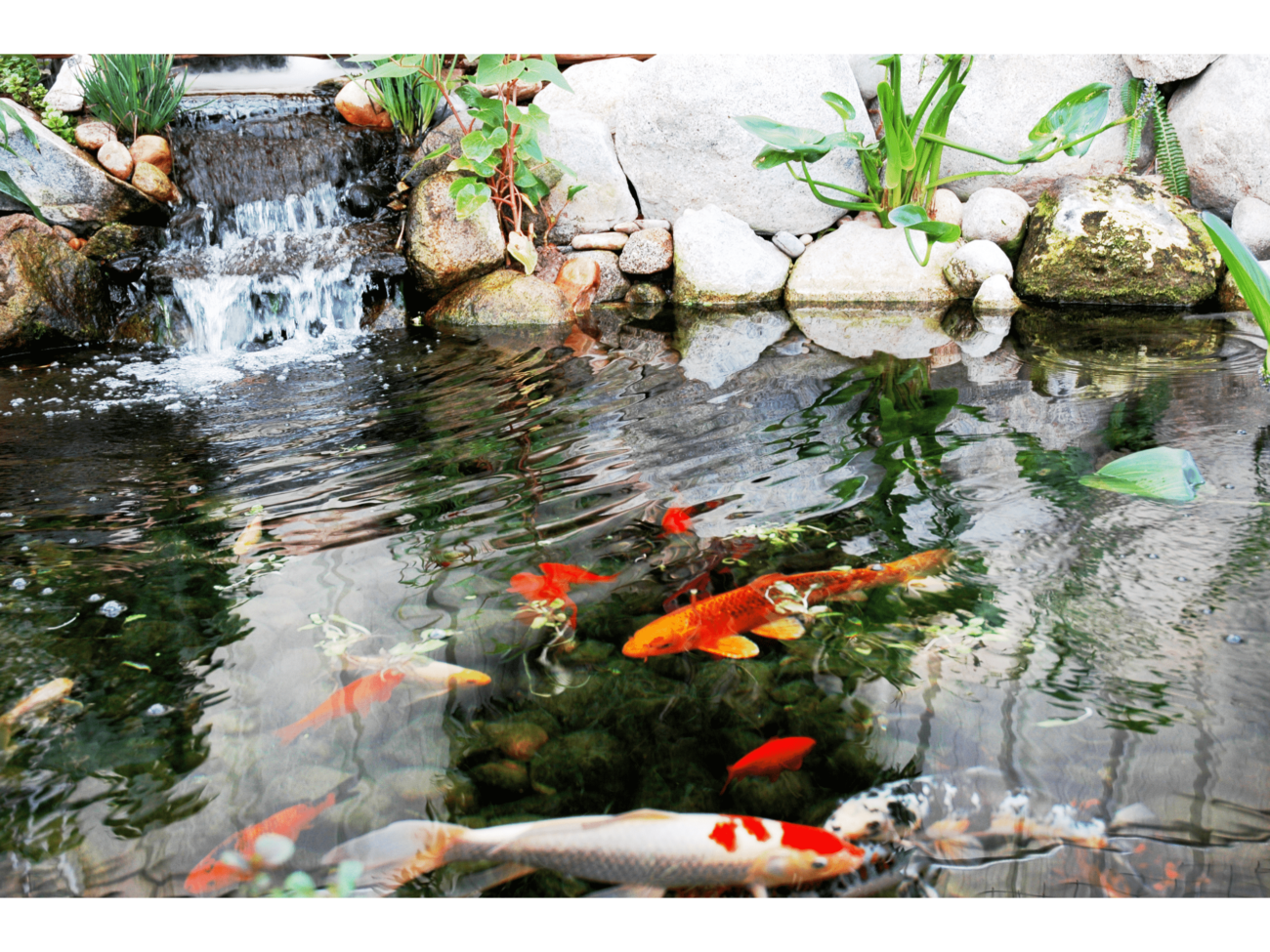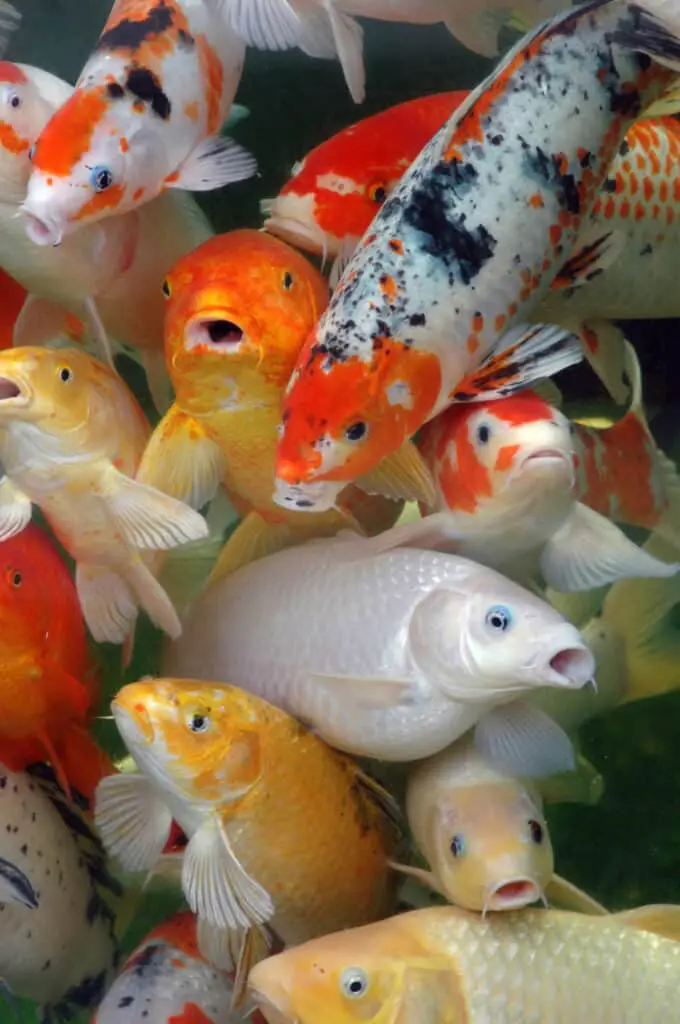
Believe it or not, koi poop is the subject of much discussion among koi keepers. Naturally, an associated topic is how much and how often to feed them. After all, what goes in also must come out. So, do Koi poop a lot? Let’s find out!.
Koi often eat small amounts because they don’t have stomachs to store their food, so they poop pretty frequently too. Healthy Koi produce one-third of their weight in poop per day. For example, a three-pound koi can be expected to produce one pound of poop daily. That is quite a lot of poop!
Koi don’t have stomachs and are naturally designed to hunt and eat continuously like most other fish. The poop a koi fish produces depends on how much and how often it eats. This article discusses koi poop in more detail and why it is such a topic of interest for koi keepers.
Pro Tip: If you’re tired of wasting money and making costly mistakes on the koi-keeping hobby or are thinking about buying koi fish but don’t know where to start, I strongly suggest you check out this ebook. I recently read this ebook, and it contains SO much useful information, such as:
- 3 proven steps to identify koi fish diseases
- WARNING: 3 things you should NEVER do when it comes to caring for koi
- When to seek professional help when it comes to looking after your koi
How Much Do Koi Poop?

It is hard to tell by sight how much poop a koi produces because it usually sinks to the lowest part of the pond unless there is something wrong with the fish. You can tell from the color and clarity of the water if your Koi are pooping a lot. Overfed Koi produce more poop resulting in higher concentrations of nitrates in the water and greater cloudiness. If your Koi pond is cloudy, you should check out my blog post, Why Is My Koi Pond Cloudy?
As a general rule, Koi produce poop in proportion to their weight. They usually make one-third of their body weight in waste each day. Thus a koi that weighs ninety grams will produce thirty grams of waste per day. Since it’s possible for a koi to grow up to three feet long and weigh twelve pounds, such a fish will create four pounds of waste every day.
If you have five or six of them in a pond, this means twenty to twenty-four pounds of waste per day! You can see why you’d need a huge pond for a few fish of this size, biofilters, and other methods of keeping the water clean. The rule of one gram of fish waste to every three grams of fish is a method koi keepers use to calculate how much fish a single biological filter can support. To learn more about eliminating waste from your Koi pond, you can read my blog post called How Big Should A Koi Pond Filter Be?
When Koi fish are healthy, their poop settles at the bottom of the pond and accumulates. It is vital to keep the pond water as clear and clean as possible to prevent disease and promote the growth and health of your Koi. Too much poop at the bottom of the pond affects the water quality and causes chemical imbalances that can ultimately kill the fish. To learn how to improve your koi pond’s water quality, you can read my blog post called What Is The Best Koi Pond Water Test Kit?
Unfortunately, in an attempt to keep the water as clear as possible, some fixated koi keepers underfeed their fish, adversely affecting their health, causing deformities, stunted growth, and poor coloration. Other signs of underfeeding are sunken eyes, inactivity, tail fins with kinks, and enlarged craniums.
What Does Koi Poop Look Like
When it is at the bottom of a koi pond, the poop looks like brown sludge. It resembles a thin, sausage-shaped package when being excreted. The color depends on what the fish have been eating. For instance, a shrimp diet may result in pinkish poop, while algae and peas can cause green poop, but it is typically brown.
Healthy poop rapidly sinks to the bottom of the pond while unhealthy poop floats on the surface. If the feces float or look gelatinous, the fish may have a scrape in the lining of its intestines. Thin white poop is usually a sign of infection unless you know your koi fish has eaten white food recently. If you would like to learn more about Koi fish health, I wrote a blog post called “How do you know if your Koi fish has parasites.
Trailing strands of white poop can also be a sign of underfeeding. If the poop is clear with bubbles in it, the fish is not eating properly, or you may be underfeeding it. Clear poop is also a sign of infection and is fish diarrhea.
The fish is likely constipated if the feces look fatter and hang from the fish in a long string. Yellow poop can indicate inflammation of the Koi’s intestines due to Coccidiosis. It is caused by parasitic protozoa called Elmeria or Goussia that must be treated with the antibiotic tetracycline.
Koi can also get intestinal worms in their poop, giving it a whitish tinge. You must deworm the fish if you see worms or eggs in the stool under a microscope. Healthy poop does not typically form long strands.
How To Keep A Koi Pond Clean Of Poop

If you leave a koi pond too long without cleaning it, the water will eventually start to smell bad, and the fish won’t survive. A well-balanced environment and high-quality water are critical to the health of Koi. An accumulation of poop decreases water clarity, accelerates clogging of their gills and mucus production, and decreases the oxygen supply in the water.
A biofilter is essential for removing the harmful chemicals in fish waste. The bacteria in biological filters help break down nitrates from fish poop and other fish waste products like ammonia. They also add carbon dioxide to feed aquatic plants, keeping the water clean and clear.
Koi keepers often use a pond vacuum to suck up the sludge from the bottom of the pond, but this alone does not improve water quality. If the water is too cloudy, you may have to pump out half of it and replace it with clean, fresh water.
Don’t keep too many Koi in a pond together. Their waste will soon overwhelm the purity of the water and create chemical imbalances that kill the fish. Overcrowding also spreads diseases caused by pathogens that thrive in unsanitary conditions.

Install a healthy number of aquatic plants that filter the ammonia and nitrates out of the water and oxygenate it.
Mechanical pond pumps come in various sizes, so you should get one big enough for your koi pond. Their job is to circulate the total water volume of the pond once an hour, so they don’t remove poop but play a vital role in water quality.
If poop is floating on the water’s surface, use a pond skimmer to remove it and investigate the cause by checking on the health of your fish. Examining poop samples under a microscope can indicate the presence of various parasites and other pathogenic organisms.
Conclusion
The amount of poop koi produce depends on how much they eat, but generally, they create one-third of their body weight in poop per day. This leads to a rapid accumulation of poop in the bottom of the pond, so it’s essential to clean it out periodically and use biological filters that break down the toxic nitrates in their waste. Koi can excrete a surprising amount of poop in a short period, so regular maintenance of pond filters is vital.
References:
https://russellwatergardens.com/pages/metabolization-rates-of-biological-filters
https://www.kodamakoifarm.com/koi-sick-health-diagnosis-symptoms-diseases/
https://www.vin.com/apputil/content/defaultadv1.aspx?id=3981838&pid=11119&
https://animals.mom.com/should-feed-koi-10555.html
https://www.aquascapeinc.com/water-gardening/maintenance-and-care/the-key-to-clean-water


